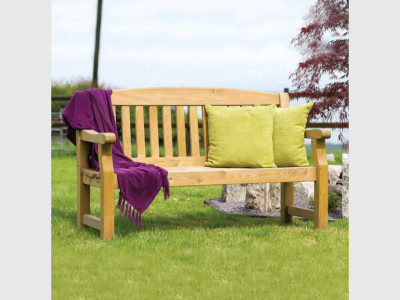What Is The Best Finish for Garden Furniture?
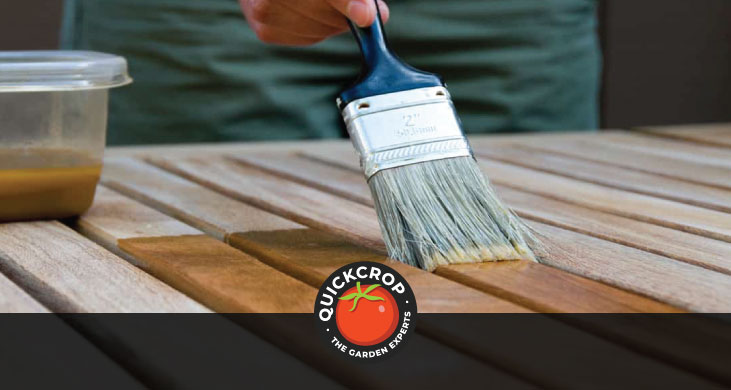
A finish generally refers to a coating which you can apply to your garden furniture to add extra protection, improve its weather resistance or retain its visual appeal. This can be done just after you’ve bought the furniture (although with some materials it’s better to let them be at first). It can also be applied to weathered, worn furniture in order to restore it to its former glory. The restorative power of a well-chosen finish shouldn’t be underestimated. Even if your outdoor furniture seems ‘too far gone’, you’d be surprised at how much you can turn the clock back and have it looking almost brand new again.
Why Apply a Finish?
When you purchase outdoor furniture, it’s to be expected that you’ll have chosen it because it’s been advertised as one or more of the following:
durable…weatherproof…rot-resistant…water-resistant…etc etc.
Yet the elements will take a toll on even the more robust types of outdoor furniture. Weatherproof material will certainly fare better for longer when compared to untreated wood, but nothing will stay indestructible forever. Depending on the material, it will sometimes be recommended to cover or shelter the furniture during prolonged spells of rain or stormy conditions.
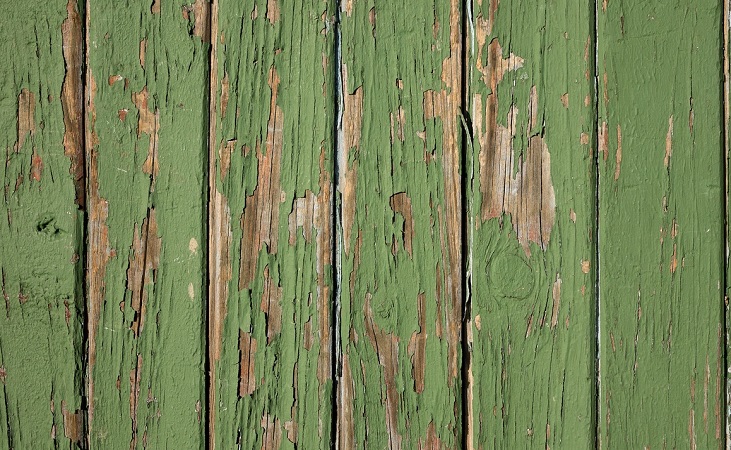
Examples of threats to the well-being of your outdoor furniture include:
- Moisture Outdoor and garden furniture is exposed to the elements. Whether it’s sudden rain storms or even just regular morning dew, moisture will test your furniture and eventually it can cause decay, damage or problems with mould.
- Sun and Heat Exposure to the direct rays of the sun and hot conditions can eventually lead to fading, warping and cracking. The sun will also change the colour of your wooden furniture over time to a silvery or grey patina. You can tackle or prevent this with your choice of finish - if you wish. For plenty of people, this naturally weathered appearance has an appeal of its own.
- Insects Termites, wasps or wood-boring beetles can tunnel into or damage your garden furniture - not ideal! A suitable finish will repel them.
- Algae This greenish material can be the scourge of garden furniture at times. Its spores are everywhere, and it grows on surfaces if it’s provided with the right combination of oxygen, moisture and light. Not only is it unpleasant in appearance, it can also eventually cause your outdoor pieces to decay.
- Humidity Changes in humidity can cause the wood to expand and contract, which increases the potential for cracking.
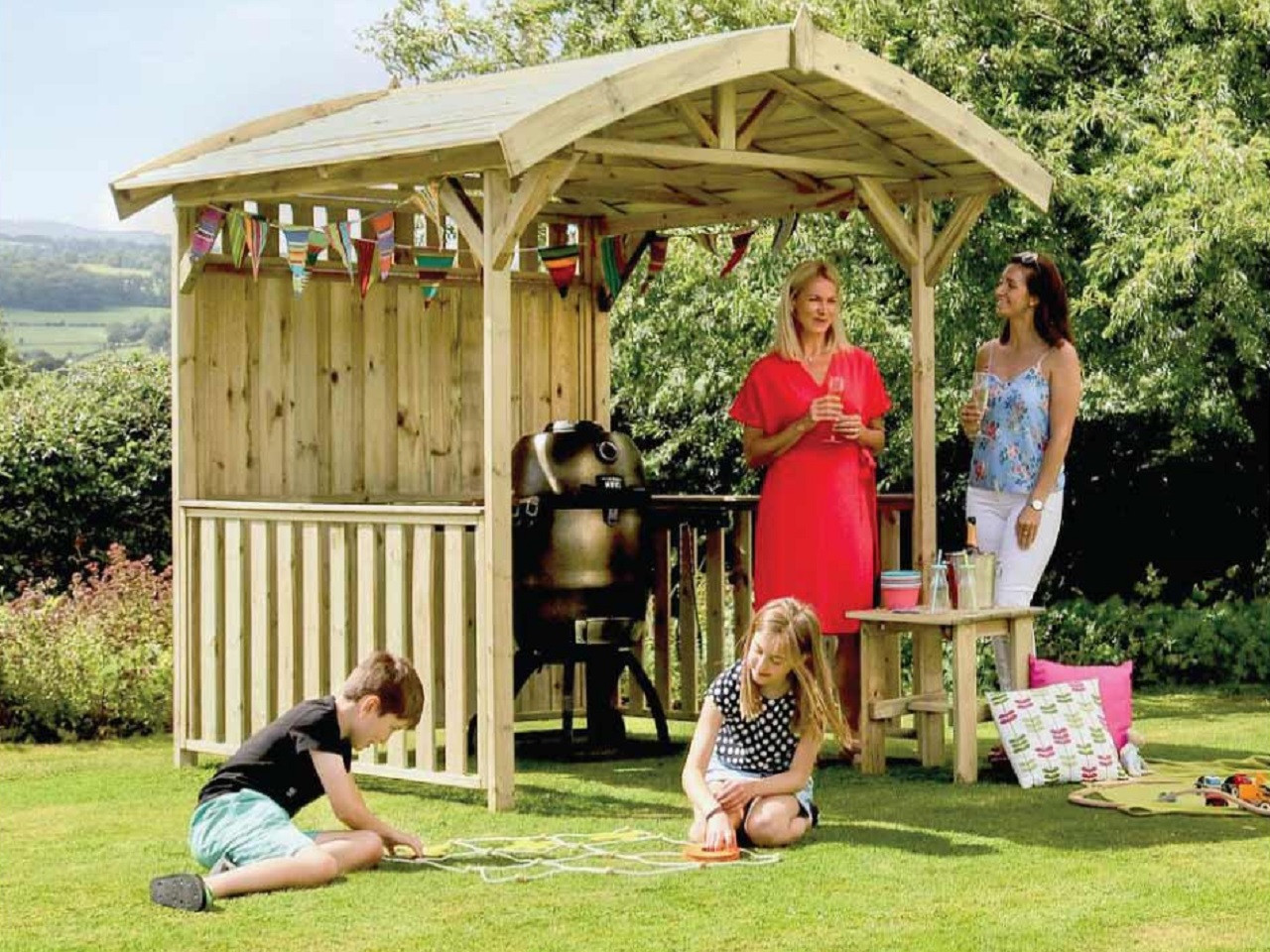
Appleton Gazebo
View ProductThe best finish to choose for garden furniture can depend on whether the furniture is brand new or old, what type of wood it’s been crafted from, what kind of condition it’s in as well as how it was pre-treated before purchase (e.g. does it have a weatherproof coating of some kind?). For example, teak hardwood is a dense, durable material with lots of natural oils that make it very resistant to mould, rot and decay. On the other hand, softwood furniture (such as pine) will ask for a lot more protection and upkeep from you.
When you’ve taken all that into account, deciding on the best finish can become something of a trade-off between:
- Looks (keeping the furniture looking the way you’d like it to look)
- Durability (giving the furniture the best chance of standing up to the elements)
- Ease of maintenance (how easy will it be to clean furniture with this finish? How often will the finish need to be re-applied?)
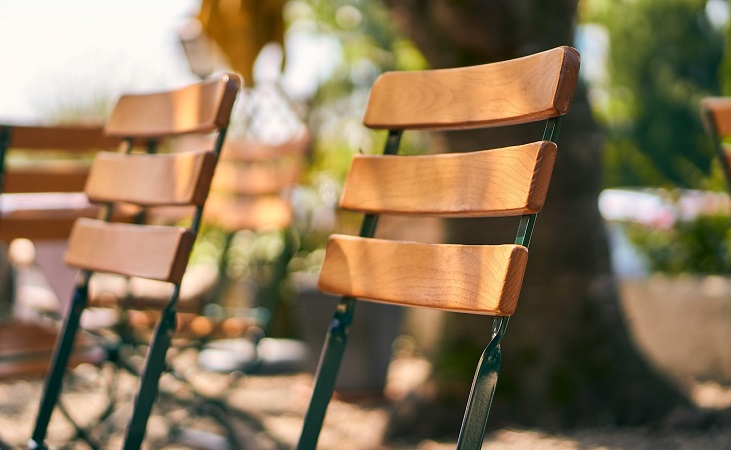
There’s no getting around it: the world of finishes can also get a bit complicated at times. For instance, if a piece of furniture has previously had a varnish applied to it, you can’t really go on to use an oil on it unless you strip it all back to bare wood.
Signs that wood needs to be treated or finished include:
- Flaking, peeling or cracks in the surface
- Colour of the wood has faded
- A chalky film on the surface
- furniture feels dry or brittle

Rebecca Table
View ProductPressure Treated Wood
Pressure treating wood involves treating it with chemicals in order to preserve it and protect against fungi, rot and insect damage. The timber is first dried out inside a vacuum cylinder, and then the chemical preservatives are ‘forced’ into the wood using high pressure. When timber is pressure treated it should often be safe from rot for a good 10 years or so. Pressure treated wood has anti-mildew qualities and is resistant to moisture, scratches and wear. Furniture that is treated this way will last much longer than non-treated wood furniture.
With garden furniture that’s been pressure treated, it’s recommended not to paint or treat it for a good 2-3 months after it’s been newly bought. This is to allow time for the wood to completely dry. Applying an additional finish before this has happened can lead to warping, while stains and oil will not be fully absorbed. A good sign that treated wood is ready to be painted or finished is if it starts to absorb water rather than repelling it.
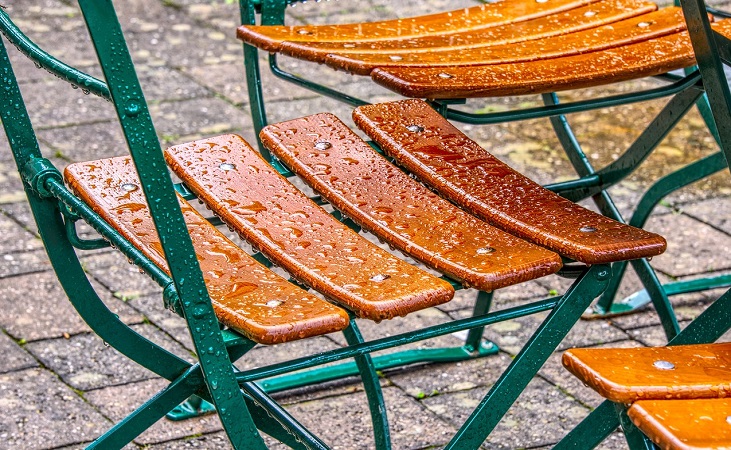
Preparation
Before applying a finish, make sure to read the specific info on the product about ingredients, suitable types of wood, application instructions, etc. You will need to work in an environment free of dust, and ideally on a calm day with no breeze or wind. You will also need to prepare your furniture for the finish. What preparing means and how much extra work it adds on can differ, according to the type of finish and the condition of the furniture (is it treated? old or new? etc)
Note: This article doesn’t cover wood stains or wood preservatives: both of these work in different ways and are not accurately referred to as ‘finishes’.
Oils
Oils - such as tung oil, teak oil or linseed oil - are a popular choice for finishing outdoor furniture. They have a very natural finish which enhances the inherent grain of the wood. They’re also quick and easy to apply: it can be done using a hand-pump spray bottle and a cloth. Oils work by penetrating deep into the wood and drying within the fibres. One benefit of this is that the finish won’t blister or peel, unlike varnish finishes which sit on the surface of the wood. Applying an oil finish can renew and replenish the natural oils that have been lost to age, wear and tear.

Garden Bar & 2 Stool Set
View ProductIf you’re finishing wood furniture with oil alone, it will require frequent re-application - sometimes as often as every season. The downside of oils is that they aren’t particularly protective in the long-term when it comes to wear and tear, moisture, UV or pest damage. However, you can increase the durability of the finish by applying a film-forming product such as varnish on top.
Oils are particularly suitable for use on bare or previously oiled wood.
Some of the oils used for wooden outdoor or garden furniture include:
- Teak Oil Teak oil works well with hardwoods like cedar, penetrating deeply into the wood while darkening it. Technically it’s a mix of linseed oil, spirits and varnish. It will generally need regular maintenance with a fresh layer every 6 months or so (?) … Many people advise against using teak oil for outdoor furniture, and even more so against using it on teak wood itself. While it can be effective in the short term, it locks you into an endless cycle of maintenance and it can actually leave the wood more vulnerable than before. Having said that, it does work well with acacia wood (a popular outdoor wood), increasing its durability while enhancing its look.
- Tung Oil A highly-rated natural and eco-friendly finish, tung oil has been used for hundreds of years to treat anything from boats to leather. Easy to apply, tung oil dries to a clear matt finish and - handily for outdoor furniture - is food-safe. Once it sets in it will prevent the wood from absorbing moisture. It can be used on both hardwood and softwood. Tung oil requires patience: it can be slow to penetrate, and the finish takes quite some time to cure (up to a month!). Again, it will need to be reapplied every 6-12 months unless you seal the finish with a top coat. Be aware that some tung oil products out don’t consist of pure tung oil, and can include a varying mix of ingredients.
- Danish Oil Danish oil is actually a mixture of oil and varnish. It has a clear, low-sheen finish, it’s easy to apply and it has a relatively fast drying time (averaging around 6 hours). Danish oil certainly has its advantages (it has great moisture resistance for one), but it results in a relatively thin film that won’t last as long as tung oil - so you’ll need to stay on top of re-applications.
Some newer types of wood oil such as ones on offer from Osmo - go one better by forming a protective, microporous layer on top of the surface. This adds moisture resistance and makes for less long-term upkeep.

Noah’s arbour
View ProductVarnish
Varnish is commonly a mixture of oil, resin and solvents. It is arguably the most durable of all the wood finishes, with excellent heat, water, alcohol and UV-resistance. It has a distinct glossy appearance when applied, although it’s also available in semi-gloss or clear styles. Indeed there are quite a few types, and it’s worth looking into which is best for your particular wood furniture. The beauty of varnish is that because it acts as a surface coat, damage to the surface (such as scratches or chipping) doesn’t always result in damage to the underlying wood. Varnish finishes won’t need re-application as often as with oils, but if the finish is a couple of years old you should watch out for signs that your furniture might need a new coating.
As for downsides? Varnishes won’t highlight the natural grain of the wood in the same way that oil finishes do. They’re also quite difficult for a beginner to apply: indeed, there’s something of a craft to applying varnish. With most varnish types, it’s best to do so with a bristle brush, applying a few thin coats and making sure to give each one time to dry. Varnish should be applied in the same direction as the grain of the wood. The more quick drying varnish types will reduce the chances of dust or grit affecting the final result.
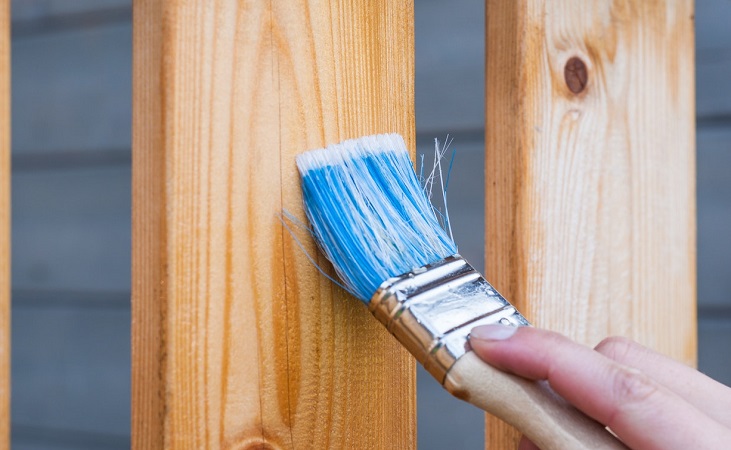
There’s also the option of using ‘spar’ varnish or spar urethane, an especially weather-resistant type that was originally developed for use on ships. As you can imagine, this will bolster the water resistance of your outdoor furniture.
Tip: Position the surfaces horizontally if possible, as varnish is easier to apply this way than vertically. Bare wood should be prepared and sanded before applying varnish as a topcoat. With finished wood, a thorough cleaning and light sanding should be sufficient.
Epoxy
In terms of durability, epoxy finishes aren’t too far behind varnish finishes. In contrast to surface finishes, however, epoxy (also often referred to as penetrating resin) acts by soaking into the wood rather than by applying a film to its surface. This results in a natural look where the grains of the wood are really emphasised, while darkening the wood slightly. Epoxy makes for a durable and flexible finish that can deal well with moisture or strong temperature shifts (i.e. without cracking). However, penetrating epoxy lacks UV resistance and this can eventually cause the finish to degrade.
It’s just as well, then, that a varnish such as polyurethane can be applied over the epoxy as a topcoat for extra durability. If this is done, the finish can last many years without needing to be re-applied. That might sound ideal - but it will involve some careful work and application to get it just right.
Because epoxy doesn’t coat the surface of the wood, any rough-looking areas will only become more evident when it’s applied. For this reason, the wood should be prepared or sanded before applying the finish.
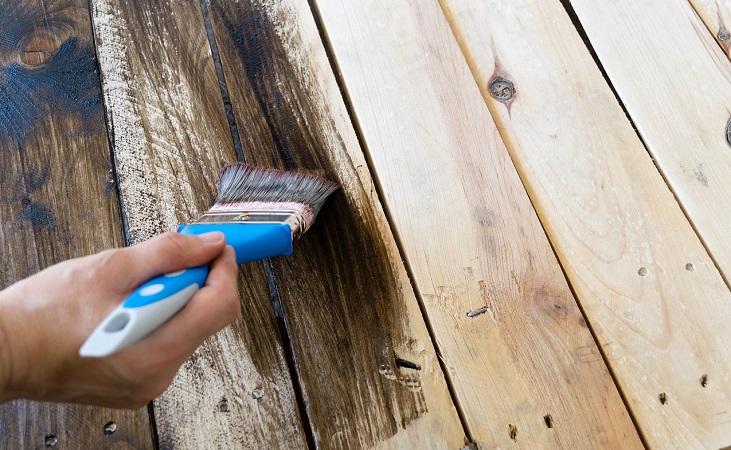
Paint
When it comes to sealing wooden furniture and protecting it from moisture and UV rays, paint may actually be the most effective and long-lasting solution of all. A well-chosen paint will essentially act as a seal, and form a protective barrier against moisture. Of course, this will also involve changing the colour and aesthetic of the wood, so it may not always be the desired choice. Some paints can even come with extra UV protection, or added biocides to protect against fungus decay. Bear in mind that if the weather is particularly warm, the paint might potentially dry too quickly when you’re applying it.
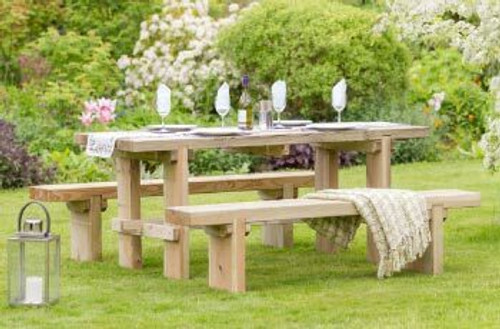
Garden Furniture
View Category
